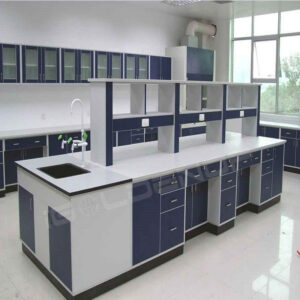The maintenance and maintenance of experimental instruments is an important part of laboratory management work, do well in the maintenance and maintenance of instruments, related to the instrument’s rate of integrity, utilization rate and experimental teaching rate, related to the success rate of the experiment.
Once the instrument absorbs dust and dirt, it not only affects the performance of the instrument, shortens the service life, directly affects the experimental effect, but also affects the appearance and the physical and mental health of the experimenter. The instrument will be stained with dust and dirt in use or storage, so as to give priority to dustproof and antifouling, and often dust cleaning is an important link to do a good job in instrument maintenance and maintenance.

(1) Dust removal
Dust is mostly tiny dust particles with a trace of static electricity, often floating in the air, with the airflow and move, the encounter will be attached to it, almost everywhere. Dust attached to the model specimen will affect its color, dust on the moving parts will increase wear, dust on electrical appliances, serious will cause short circuit, leakage, dust on precious precision instruments, serious will make the instrument scrapped.
There are many ways to remove dust, mainly depending on the condition of the surface and the degree of dust adhesion. In the dry air, if the dust is less or dust has not been moistened into patches, dry cloth can be wiped, towel duster brush, soft brush and other methods to remove the dust on the general instrument; The dust inside the instrument can be piji, ear washing ball pump blowing dust, can also be vacuumed by a vacuum cleaner; The dust in diagonal and seam can be combined with the above methods to remove dust. However, for valuable precision instruments, such as optical instruments, meters, etc., dust removal with the above method will also damage the instrument, at this time should use special dust removal tools, such as lens paper wipe, swab with alcohol, etc.
When the air is humid and the dust has formed scale blocks, the dust should be wiped with a wet cloth. The dirt in the diagonal and seam can be removed with a sharp soft strip first, and then tried to wipe with a wet cloth. However, it is not suitable to wipe the fading surface and electrical appliances with a wet cloth. If the dirt is difficult to wipe clean, you can wipe it with cotton balls dipped in alcohol or clean it.
(two) cleaning
The instrument will be stained with grease, glue, sweat and other dirt in use, and rust and mildew will be produced when the storage is carelessly preserved. These dirt will have an extremely bad effect on the life and performance of the instrument. The purpose of cleaning is to remove dirt from the instrument. Usually there are two kinds of cleaning instruments, one is the mechanical cleaning method, that is, shovel, scraping, brush and other methods of cleaning; Two is the chemical cleaning method, that is to use a variety of chemical decontamination solvent cleaning. The specific cleaning method depends on the condition of dirt adhesion surface and the nature of dirt. The following describes cleaning methods for several common instruments and components of different materials.
